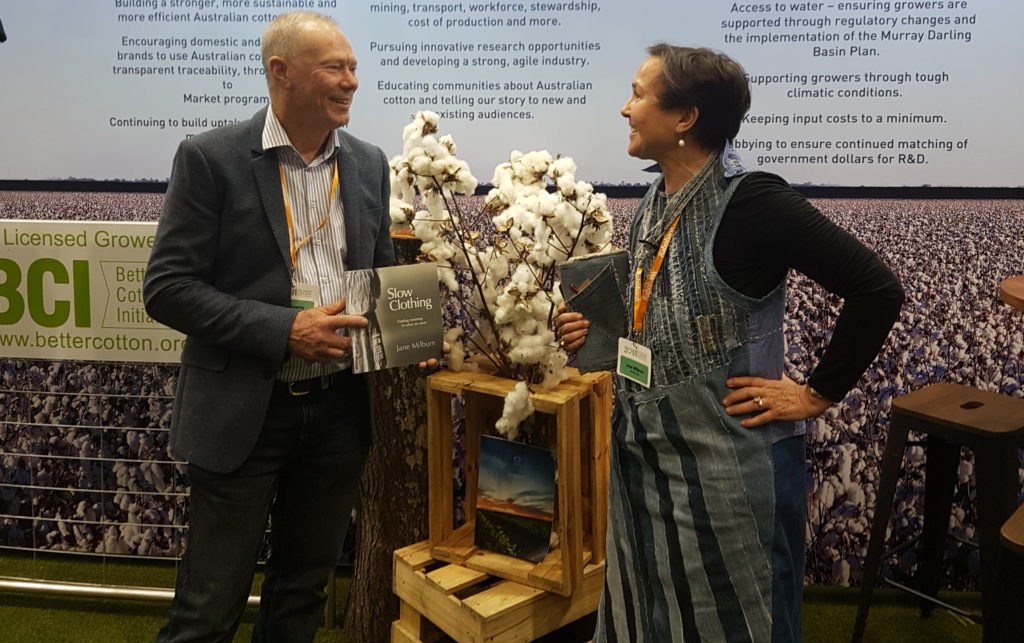Growing concern about plastic in our environment sees natural-fibre industries poised for resurgence if they demonstrate eco-credentials to increasingly discerning customers.
Natural fibres like cotton and wool have been losing market share to synthetics for some time but the tide is turning, courtesy of the plastic legacy of main alternatives which are petroleum-derived fibres polyester and acrylic.
Currently two-thirds of new clothing is made from synthetic fibres and washing these clothes is significantly contributing to plastic pollution in oceans, with each polyester garment shedding thousands of microplastic particles adding up to tonnes of ocean plastic pollution over time.
Microplastic is showing up in seafood we eat, water we drink and air we breathe. The human health effects are still under study, although it is known these fibres carry chemical endocrine disruptors that influence hormone functions and chronic disease.
A recent report from the International Union of Concern for Nature confirmed primary microplastics in the oceans predominantly come from machine-washed synthetic textiles.
Concern is such that groups like the Ellen MacArthur Foundation are calling for a fashion and textiles redesign, with substances releasing microplastic (virgin and recycled polyester) to be phased out. Another response from Californian regulators is for a wash-by-hand warning label on clothes made from 50 percent synthetics.
The past two decades saw an escalation in synthetic-fibre production along with fast fashion supply chains driving consumption to double at least, clothing utility to decline to a few wears, and Australians to become the second-largest consumers after Americans. This is documented in Slow Clothing: finding meaning in what we wear along with other issues like waste, exploitation and loss of mending skills and knowledge.
But change is coming. It must. The Intergovernmental Panel on Climate Change continues to issue warnings about catastrophic change unless pollution and rising temperatures are curbed.
A sustainable clothing approach is the opposite of disposable fast fashion and it comes in many forms. There is rising community interest in the simplest approach – wear clothes that already exist and wear them for longer. Less shopping and washing makes household economic and ecological sense.
While technological recycling solutions are emerging, issues include difficulties separating blended fibres and the downgraded quality of reprocessed natural fibres.
Progressive retail fashion businesses are now including sustainability and transparency targets in their strategic planning. At the 2018 Cotton Conference, the stated intention of brands such as Country Road Group and Wesfarmers (Target and Kmart) was to source 100 percent sustainable cotton within three years. These brands are responding to customers’ requests for traceable and sustainable products that are accredited by the global Better Cotton Initiative (BCI).
As the world’s largest natural-fibre industry, cotton carries some historical baggage (think Aral Sea, slaves and pesticides) but BCI was launched in 2009 to accredit cotton that is ‘better for the people who produce it, better for the environment it grows in and better for the sector’s future’.
The Australian industry has developed a best management practice and accreditation standard, known as myBMP, which aligned with BCI in 2014. This year only about a fifth of local cotton was grown on accredited farms but Cotton Australia’s Rick Kowitz says that proportion will increase quickly as farmers recognise the benefits of marketing their crop as sustainable BCI cotton.
Industry has been steadily advancing its sustainability credentials in other ways too, with water use down 40 percent due to efficiency measures that remain ongoing and pesticide use down 90 percent due to integrated pest management and genetically modified cotton plants.
The other natural fibre Australia ships to the world is wool and as a naturally produced, biodegradable and renewable fibre, that industry believes it is well-placed for the emerging green trend for textiles.
Australian Wool Innovation says industry is committed to environmental stewardship and water management, and transparency around the contentious issue of animal welfare and flystrike is now managed through a National Wool Declaration program that variously offers non-mulesed, ceased mulesing and pain-relief categories.
Other biodegradable fibres on the rise globally are wood-based cellulosic materials such as tencel, viscose, lyocell, modal which made up about 6 percent of the fibre market of 107 million tonnes in 2017 (cotton is 25 percent, synthetics 64 percent and other naturals including wool 5 percent).
Lenzing AG executive vice president Amit Gautam said their cellulosic fibres are produced in closed loop systems after harvesting vegetation from trees that remain in plantations fixing carbon and protecting soil from erosion.
Gautam confirmed the future of synthetics was uncertain after earlier huge growth due to cheap production cost. He also believes more authentic long-wearing fashion will play an important role in future because unlimited production is practically impossible.
This article by Jane Milburn was first published in Ruth Magazine, Jane Milburn Summer 1 Jane Milburn Summer 2
Πηγή: textilebeat.com

